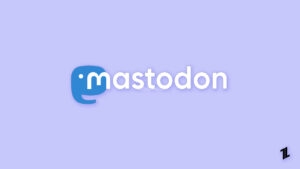
Recently, Twitter has faced wrath from Indians as some worldwide famous celebrities took their Twitter handles to address the ongoing farmer’s protests in India. Indians found it offensive and started a trend #BanTwitter on Twitter itself. Now a very good alternative for Twitter is Koo which is India-made and that leaves us to Koo vs Twitter.
In this article, we are going to do a little bit comparison of Koo vs Twitter and see that is it even worth it to migrate to Koo and stop using Twitter.
Koo App

Since we are talking about Koo vs Twitter, let me give you some context about Koo. Koo is an Indian Micro-blogging social media site. The platform was launched about 10 months ago. It was chosen by IT Ministry after a competition.
The whole idea behind Koo is to develop indigenous apps within the country so that users don’t have to compromise on data leaks to another country. The company calls it “the voice of India in Indian languages”.
Koo vs Twitter
Why Even Talk About It?
The very first thing that you are thinking about might be, why are we even talking about the Koo vs Twitter comparison all of a sudden.
Well, there have been ongoing protests in the capital city of India, Delhi by the farmers against the Government regarding the new Farm Laws and Bill. The protests have been going on for a while and they are receiving international attention.
Recently famous celebrities like actress Rihanna, Porn Star Mia Khalifa, and some other people raised concerns about the farmers and called out in their support. This action wasn’t well-received by the Indians including all the famous Indian celebrities, People from the Government, and a lot of the general public too.
Many Indian celebrities took their Twitter and asked all the international people to not interfere in the internal matters of India. Also, some reports suggested that this whole tweeting thing about the farmers by foreign celebrities was a part of a hate-mongering campaign against India and the Indian Government.

This whole fiasco led people to say that it is time to stop using Twitter and migrate to Koo which is indigenously developed and made especially for the Indian audience.
A lot of Government Officials, famous people have started to use Koo as their social media broadcasting system and this whole thing led to #bantwitter to trend on Twitter itself which is quite ironic.
So now you know the context, people just have one reason more than anything and that is to have a platform that is free from the international opinions on their nation’s issues. So the reasons are obviously political. Koo got into the attention curve after the Prime Minister of India, Narendra Modi talked about it on the Mann ki Baat program.
Koo and Twitter have a lot of similarities and there isn’t any big drastic difference in terms of using them. So let us talk about their similarities and differences first and then we will talk about the things of concern.
Koo vs Twitter: Similarities
Both of the apps work in the same way when it comes to using the app, one can share images, videos, links, their thoughts, opinions on both of the apps in the same way.
Both Koo and Twitter are available for iOS and Android so people can use them on both Apple and Android smartphones with ease.
Similar to Twitter, you can also send DMs to people, there are options to share topics or people. Koo also has a very similar Trending section just like Twitter.
Koo vs Twitter: Differences
The very first and major difference between Koo and Twitter is the characters limit. While Twitter gives you the character limits of 280 characters, Koo gives you a limit of 400 characters.
Another key difference on Koo is that it also supports many Indian languages like Hindi, Tamil, Telegu, and Kannada. The company says that it will bring support for Punjabi, Bangla, Oriya, Malayalam, and Assamese too.
The feed on Koo is in two sections, the first section is the feed itself just like Twitter’s feed and the second section is people which shows the people you follow and suggestions.
Sign up process is also different on both of the platforms. Koo requires your mobile number to send OTP and create your account, you can later add details to your profile. While Twitter uses username and password which are associated with a phone number or email ID.
User Base
This is one of the main key differences between Koo and Twitter. You see, Twitter is one the most famous microblogging site worldwide and it is used by pretty much every powerful or famous person in this world. It has users all over the world. So Twitter is global.
While Koo is mainly made for the Indian audience and mostly has an Indian user base which kind of makes it restricted to an Indian micro-blogging site.
Security Concern with Koo
Famous ethical hacker Elliot Alderson has raised security concerns related to Koo and found out that the app is leaking details like email, date of birth, name, marital status, gender, and other stuff. This obviously has raised concerns.
However, CEO and Co-founder of KOO, Aprameya Radhakrishna clarified that the users’ data is safe and said, “We are not presently monetising and hence don’t have the need to share data with any third party. So that is safe. We will innovate and always try and figure a way to monetise that is not a risk to users”.
Another controversy is although Koo is claimed to be an Indian app, its origin is shady as Alderson tweeted that Kooapp.com was registered by Tao Zhou from China on April 16, 2017.
To clarify this, Radhakrishna tweeted, “Koo is an India registered company with Indian founders. Raised earlier capital 2.5 years ago. Latest funds for Bombinate Technologies is led by a truly Indian 3one4 capital. Shunwei (single digit shareholder) which has invested in our Vokal journey will be exiting fully.”.
So yes, as of now there are some security concerns with Koo but I hope that they solve them quickly.
Why Migrate?
You see the only reason why people are angry towards Twitter and want an indigenous platform is because they do not want foreign opinions on their internal matters.
However, this is not one of the best arguments to just migrate to a platform that has far fewer users and is not global yet. If you want to promote an indigenously developed platform, then of course you should promote it by using it, giving feedback but that does not mean that you have to stop using a global platform like Twitter.
The best suggestion at this point is to use both Koo and Twitter side-by-side and when you feel like not using Twitter, you can completely migrate to Koo.
Bottom Line
So that was everything related to Koo vs Twitter. The bottom line is that yes, everyone should start using Koo on their smartphones and build a good engagement on the app but do not completely stop using Twitter for that reason as the issue is very political, and political issues tend to change quickly.
Directly in Your Inbox









